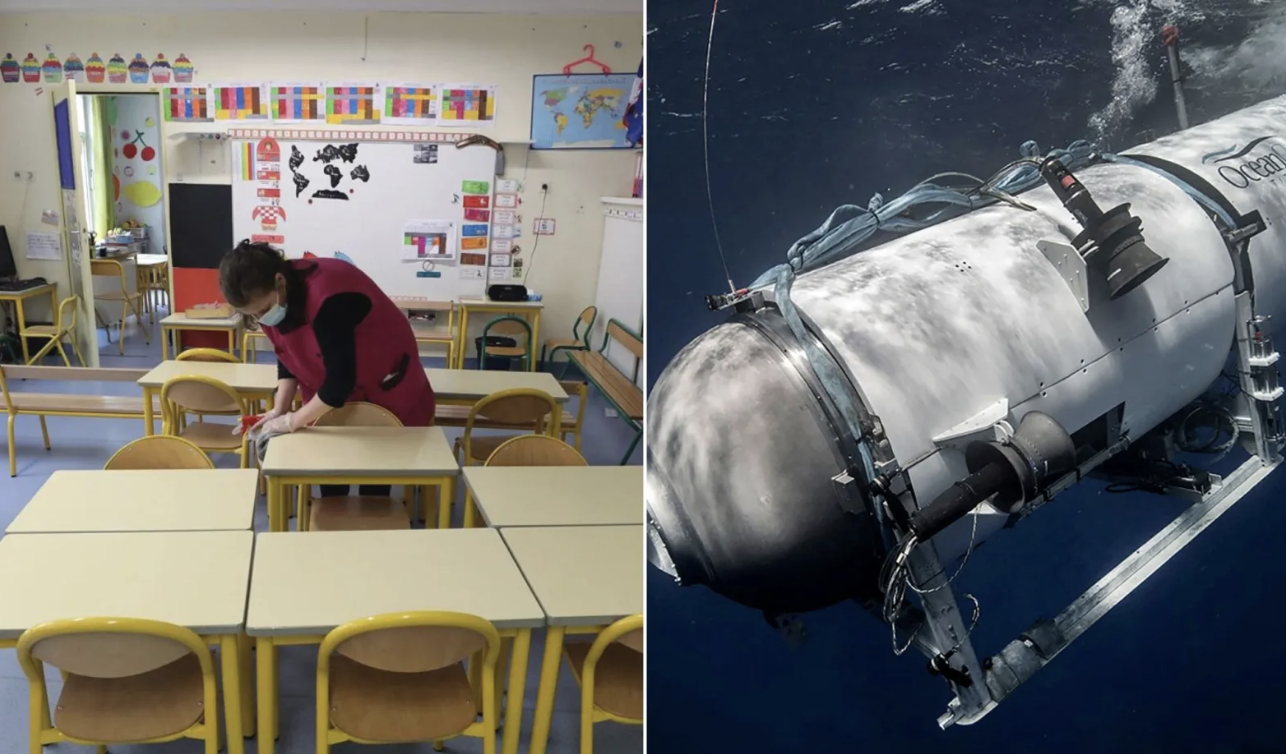By: Madeleine Kearns – nationalreview.com –
Human history, sadly, is littered with examples of worst-case scenarios come to life.
On April 10, 1912, the passengers and crew of the Titanic set out on their maiden voyage from Southampton, England, to New York. Five days later, the ship collided with an iceberg roughly 370 miles off the coast of Newfoundland, Canada, where it has remained ever since, 12,500 feet below the ocean’s surface.
The ship’s designers had assumed that, owing to the ship’s size, in the event of a crisis, nearby ships would have enough time to come to the rescue, and existing lifeboats could make multiple trips back and forth. But as we know, that didn’t happen. The Titanic sank in two hours and 40 minutes, taking more than 1,500 people with it, as 700 or so survivors, adrift at a distance, watched in horror.
There is good reason to suppose that nobody would have died had the ship’s owners spent more time imagining — and subsequently preparing for — a worst-case scenario. The ensuant tragedy was the result of their unscrupulous optimism, as much as unstoppable forces of nature. What a bitter irony, then, that this past week, similarly flawed assumptions imperiled visitors to the Titanicwreckage.
OceanGate, founded by the aerospace engineer and pilot Stockton Rush, has been offering deep-sea tours of the wreck since 2021, at a price of up to $250,000 per passenger. Their submersible, the Titan, was made of carbon fiber and titanium, and was roughly the size of a minivan. The Titan’s last and final five-man crew included Rush, as well as British businessman Hamish Harding, Pakistani investor Shahzada Dawood and his son Suleman, and French diver Paul-Henri Nargeolet. They departed last Sunday. But after one hour and 45 minutes, they lost contact with the Canadian expedition ship, the Polar Prince.
On Thursday morning, amid a frantic search to find the Titan before it ran out of oxygen, the U.S. Coast Guard confirmed that debris had been found, indicating a “catastrophic implosion.” All five crew members are presumed dead.
* * *
In other tragic news, more evidence was released last week about the devastating effects of our pandemic-era policies. The CDC released a report that both youth suicides and homicides hit a 20-year high in 2021. These effects also might have been mitigated if those in charge had spent more time considering how horribly wrong the school-closure and lockdown experiment could go.
It’s easy to say what should have been done with hindsight. But let’s look at what was known at the time. First, mental health in American youth was already on a dangerous downward spiral, a trend researched by Jean Twenge in her 2017 book, iGen. Second, as early as March 2020, the health professionals were confident that the coronavirus posed little physical risk to children.
Gen Z and the generation below, Gen Alpha, are digital natives, many of whom grow up with virtually unfettered access to the internet. There is a well-established association between social-media use and anxiety and depression, especially among girls. As was predictable, social-media use increased significantly during the pandemic.
Parents warned of harms to children from lockdowns, in terms both of missing out on education and of overall wellbeing. The “learning gap” worst affects students from lower socioeconomic backgrounds. Moreover, for some youngsters, it seems that school may have been the only thing keeping them from trouble on the streets. Along with the calls to “defund the police” and the riots in major Democrat-run cities across the U.S., the homicide rate among victims ages ten to 24 increased 37 percent from 2019 to 2020.
What we saw during the coronavirus was a reckless experiment. By knocking out pillars of social stability like Jenga blocks, the forces of chaos prevailed.
Six months ago, David Pogue did a report for CBS News on the Titan in which CEO Stockton Rush explained how it’s supposed to function: “like an elevator,” with one single button for descent, and thereafter directed by an Xbox-style controller. Others in the industry had raised safety concerns in the past about the Titan system.
“It seems like this submersible has some elements of MacGyvery jerry-rigged-ness,” Pogue said to Rush. “I don’t know if I would use that description,” Rush replied, explaining that he had worked with Boeing and NASA on certain elements of the vessel. It’s true that Rush, who had a degree in aerospace engineering, was no fool. He was a visionary, believing that “the future of mankind is underwater, it’s not on Mars.”
A spirit of adventure, innovation, and risk-taking are all necessary to advance human interests. We should not begrudge anybody those attributes, and the courage it takes to wield them. This tragedy, as well as the Covid-policy debacle and countless other examples, are reminders of the need to temper boundary-pushing ideas with a firm grasp of human limitations and an imagination that has fully reckoned with worst- (as well as best-) case scenarios.
To see this article in its entirety and subscribe to others like it, please choose to read more.
Source: Titan Tragedy & Covid Lockdowns: Worst-Case Scenarios Sometimes Come True | National Review
 Listen Online
Listen Online Watch Online
Watch Online Find a Station in Your Area
Find a Station in Your Area









 Listen Now
Listen Now Watch Online
Watch Online
